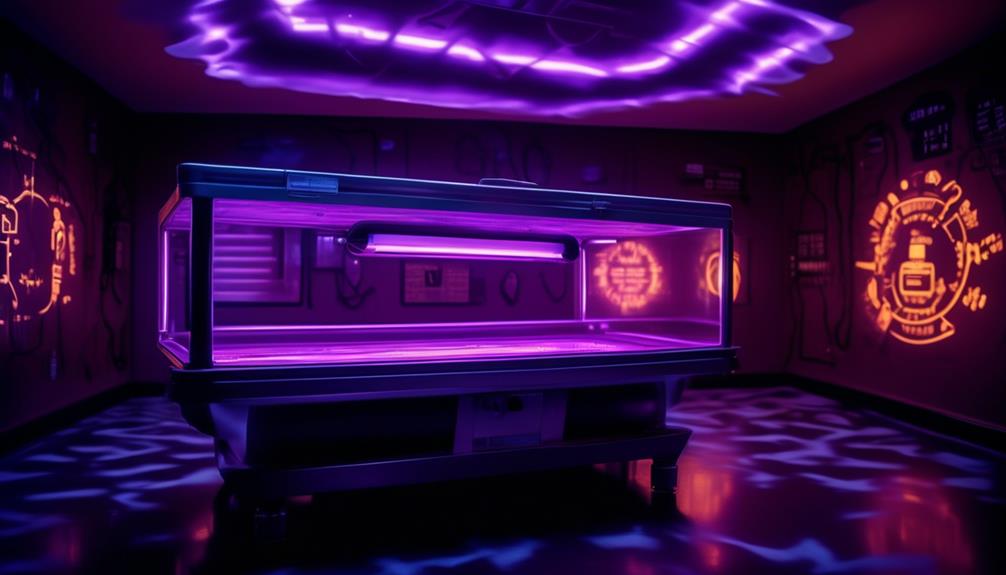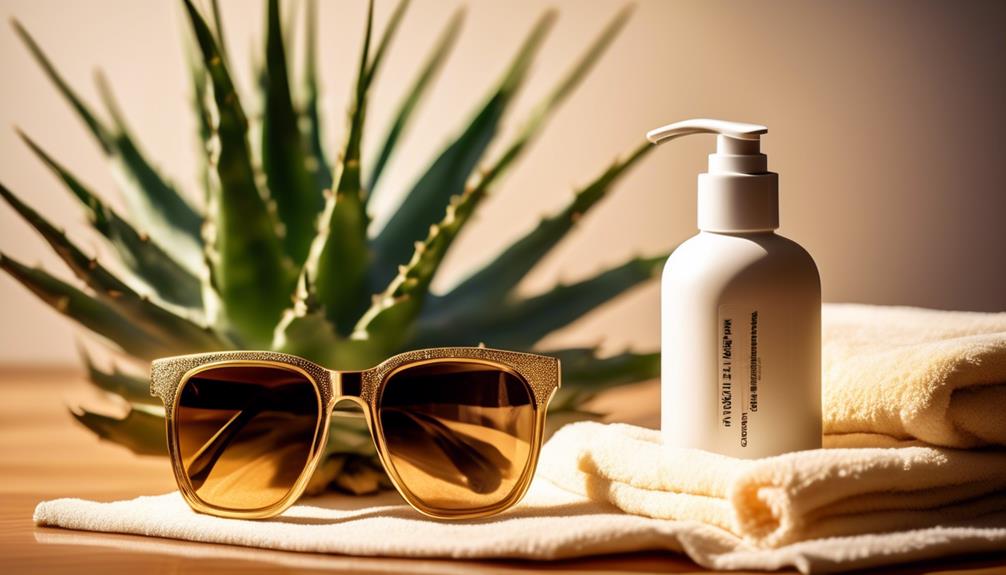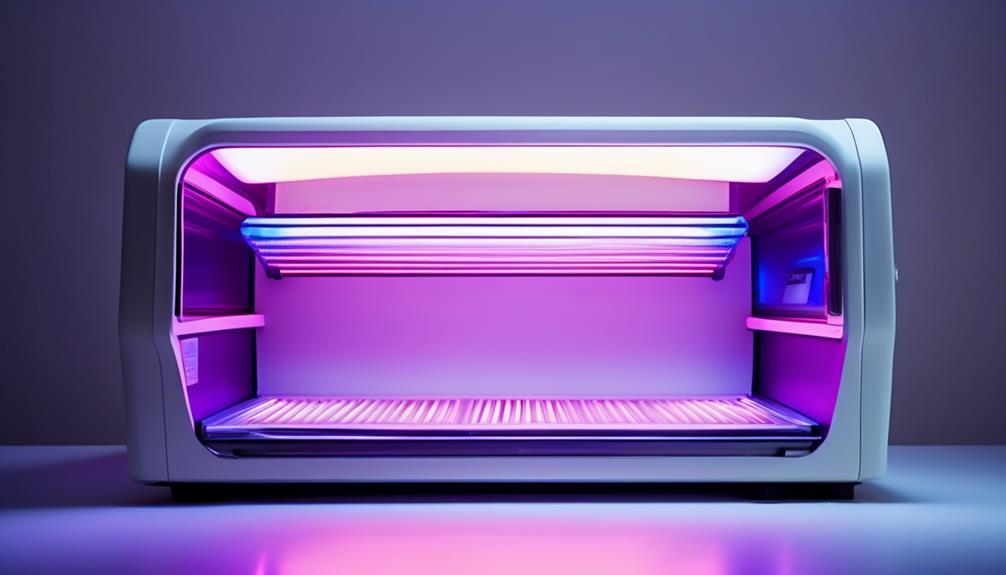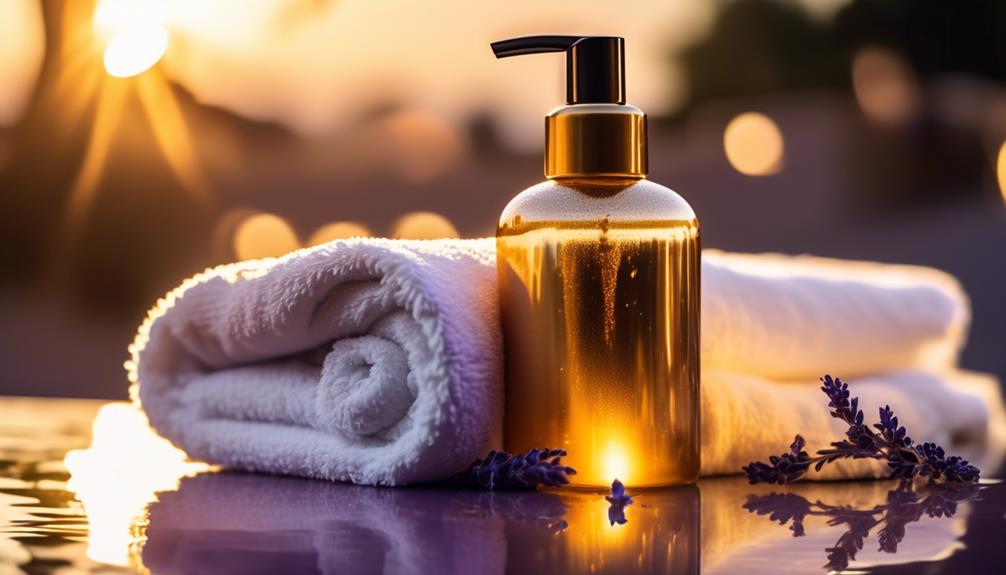Tanning beds aren’t your skin’s BFF; they’re more like that frenemy who’s sweet to your face but talks behind your back. You might think you’re getting that perfect, sun-kissed glow, but what you’re really signing up for could be a host of not-so-chic consequences, like melanoma, and premature wrinkles that no fancy cream can iron out.
Sure, we all want to look bomb in our selfies, but at what cost? Stick around, and we’ll spill the tea on the risks and how you can stay golden without playing roulette with your health.
Key Takeaways
- Tanning beds expose your skin to harmful UV radiation, increasing the risk of skin cancer.
- Melanoma, basal cell carcinoma, and squamous cell carcinoma are all linked to UV exposure from tanning beds.
- Indoor tanning significantly increases the risk of skin cancer, and starting before age 30 greatly increases the risk.
- Safe alternatives to UV tanning, such as self-tanners and spray tans, eliminate the risk of skin cancer while still achieving a sun-kissed look.
Understanding UV Radiation Exposure
Let’s get real about something – when you’re lounging in a sunbed, you’re soaking up way more than just those feel-good vibes; you’re also getting a hefty dose of UV radiation that’s no friend to your skin. You see, those UV rays, they’re a sneaky bunch. They give you that golden glow, sure, but at what cost?
Under that bronzed surface, ultraviolet (UV) radiation is wreaking havoc, causing DNA damage that can lead to skin cancer. And we’re not just talking a little ouchie that fades. We’re talking serious business like melanoma, basal cell carcinoma, and squamous cell carcinoma. These are the big bads of the skin cancer world, and they’re all linked to UV exposure.
Now, don’t fall for that myth peddled by tanning beds as a ‘safer tan’. There’s no such thing as a safe UV tan, period. And no, baking in a tanning bed won’t armor you against a sunburn or sneak you some vitamin D benefits. Instead, opt for a fake tan or spray tan. They’ll give you that sun-kissed look without the UV nasties. Stay smart, stay safe, and keep that skin happy without the risk.
Identifying Skin Cancer Types
Now it’s time to spot the troublemakers: basal cell carcinoma, squamous cell carcinoma, and the notorious melanoma. These are the types of skin cancer you’ve gotta watch out for. The sneaky UV radiation from those tanning beds can lead to DNA damage, which basically sets the stage for these unwanted guests.
Basal cell carcinoma? It’s the ‘I’m here all the time’ type, super common but less likely to spread. Squamous cell carcinoma is its slightly meaner cousin, still common but a bit more likely to get around if it isn’t caught early. And melanoma – well, that’s the big bad. It doesn’t show up as often, but when it does, you better take it seriously because it’s way more lethal.
The Skin Cancer Foundation isn’t messing around when they say early detection is your BFF here. Finding these cancers early can literally save your skin – and your life. Each year, skin cancer is responsible for about 2,000 passings in the U.S. alone. So, let’s keep that risk of developing any cancer low by side-eyeing those tanning beds, shall we?
Evaluating Risk Factors
Indoor tanning is like playing with fire when it comes to your skin’s health. Seriously, lounging in those indoor tanning beds is a major risk move for skin cancer. It’s not just a fling with UV light; we’re talking full-on, DNA-damaging relationships.
The UV radiation that’s beaming from those beds? It’s the same villain that the sun throws at you. And it’s not playing favorites—your skin is under attack, and that can lead straight to melanoma city. Plus, if you’re hitting tanning beds before age 30, you’re cranking up your risk factor big time. Not cool.
And for those myths about ‘safe tanning’ and ‘base tans’ making you invincible against skin damage—nah, not happening. There’s no knight in shining armor coming from a tanning bed to shield you from sunburn. It’s all a facade, and deep down, it’s just more damage.
Emphasizing Eye Protection Importance
While we’re spotlighting the big no-nos of indoor tanning, don’t forget your peepers need protection too—slap on those goggles because UV rays don’t just mess with your skin, they go for the eyes as well. You’ve heard the horror stories about skin cancer and melanoma, right? Well, your eyes are on the front line, soaking up that UV radiation that can seriously damage the DNA in your eye cells, jacking up your risk for some serious issues.
Let’s break it down, shall we? Here’s why you gotta shield those windows to your soul:
- Cut the Cataract Risk: Without eye protection, you’re inviting UVB radiation to cloud up your vision, literally. Cataracts, anyone?
- Block the Burn: Just like your skin, your eyes can get sunburned. UVA rays from tanning beds are no joke, and they’re not playing favorites.
- DNA Damage Dodge: Goggles are your besties—they keep UV rays from messing with your eye DNA, which means they’re fighting for you against increasing your risk of eye cancers.
- Keep the Sparkle: You want to keep those eyes sparkling, right? Damage from UV radiation is cumulative, so every session counts.
Don’t skimp on eye protection. It’s a small step with mega impact. Keep your gaze fierce and your future bright!
Implementing Safe Tanning Practices
Self-tanners and spray tans are your skin’s new BFFs, kicking those risky UV rays to the curb. Ditch the UV tanning game; it’s so not worth the gamble. When you’re cozying up to a bronzy hue from a bottle or a pro’s airbrush, you’re sidestepping a whole lot of drama – no more flirting with skin cancer or courting melanoma before age 30. And let’s be real, DNA damage? That’s a hard pass.
Work that natural tone and amp up your skincare routine. Let’s make every day a Sun Protection day – sunscreen with SPF 30 or higher, shades, and hats should be your go-to accessories. Peak sun hours? They’re overrated. Find some shade and chill.
Frequently Asked Questions
How Many Sunbeds a Week Is Safe?
Every session ups your skin cancer risk, and that’s the last thing you want.
You might think a little glow’s worth it, but trust me, it’s not. Love your skin, protect it. Rock that natural beauty and steer clear of those UV rays.
Your future self will thank you. Stay safe and slay with that gorgeous, untouched skin!
What Are the Odds of Getting Skin Cancer?
Your odds of getting skin cancer skyrocket with each session.
It’s like cranking up your chances of melanoma by 75% before you even hit 35. That’s not playing it cool, that’s playing with fire.
Can Using Indoor Tanning Beds Before Age of 35 Increase Your Risk of Melanoma?
Absolutely, using indoor tanning beds before you’re 35 can skyrocket your melanoma risk by a whopping 75%. It’s a stark number that you can’t ignore.
It’s more than a bad sunburn; it’s playing roulette with your skin’s health. So, forget that artificial glow and embrace your natural skin tone. Trust me, your skin will thank you later, and you’ll dodge a bullet in the long run.
Stay safe, not sorry!
What Is the Safest Way to Tan?
The safest way to score a tan isn’t by baking under lights or frying in the sun. Grab a self-tanning lotion or spray. They’ve come a long way and can give you that sun-kissed look without the damage.
Rocking your natural skin tone? That’s always in. Just remember to slap on some SPF when you’re out – skin’s gotta stay healthy to stay hot!




